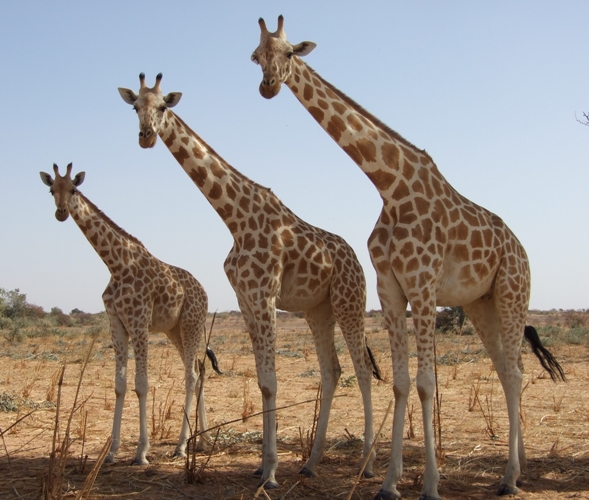By Michela Reinink
In news that has shocked and saddened the conservation community, two of the world’s three remaining white giraffes have been hunted and killed. Park rangers found the skeletal remains in the Ishaqbini Hirola Community Conservancy in Kenya, estimating that the animals had been killed four months prior. Conservationists believe that the deaths leave only one remaining white giraffe in the world: a lone male borne of the same slaughtered female.
These white giraffes were first seen in 2016, and have fascinated conservationists and nature enthusiasts alike. The giraffes are thought to have leucism, a rare genetic condition that results in partial loss of pigmentation. Unlike albinism, wherein all melanin production is lost, resulting in red eyes, animals with leucism will usually have dark coloured eyes.
This is certainly a big loss in the protection of rare and unique species. It is also representative of the greater problem of the decline of large species; giraffe populations have declined by 50% over the last three decades. While giraffes and other species suffer primarily from human-caused habitat loss, another reason for this decline is, undoubtedly, hunting.
It would appear that the deaths of the white giraffes are a case of poaching; a practice that is universally condemned. Trophy hunting, however, is still legal in many places, and remains to be a polarizing topic. Large game hunting, both legal and illegal, results in the same biological and ecological consequences, yet as opposed to poaching, the public is often sold the story that trophy hunting is actually helpful for sustainable conservation. The reasoning is that revenue from the sport, which only results in relatively few animals dying, is used for conservation work that could save far more animals in the long run. However, it is difficult to believe big game hunters when they say that they kill for the love of conservation. Many conservation efforts are put into place out of necessity when over-hunting occurs, so many say that further hunting is not the solution. While trophy hunting does in fact pump money into conservation, at what cost?
Biologically speaking, there are many negative effects of trophy hunting. Recent research links trophy hunting to the skewing of wildlife sex ratios, which presents a clear problem for species survival. Male lions, for example, are more highly sought after by trophy hunters, which results in lion populations with an overrepresentation of females. Additionally, the largest, strongest-looking animals are usually selected to be killed by trophy hunters, as is the nature of the sport. This directly interferes with the process of natural selection. Through natural selection, individuals with superior qualities (“good genes”) will survive and mate more frequently than those without the inferior qualities. This results in these “good genes” becoming more common in the population, and so the population evolves to become better adapted to its environment. Selectively killing the strongest animals interferes with the population’s natural ability to evolve and adapt. Hunters act as a force of inverse natural selection, selecting the “bad genes” to reproduce and propagate into the populations; in small populations, this will have a large genetic effect.
There are also significant questions of both the ethics and economic sustainability involved with trophy hunting. Despite any revenue produced, trophy hunting undoubtedly causes harm, pain, fear, suffering and death. There are also questions about how sustainable the revenue actually is. As big game populations decline, the industry will be unable to bring in the same revenue. Conservation efforts should include local community involvement, and be ethical and sustainable. The international community should place more importance on the conservation of endangered animals (especially large species, as gestation periods are longer and less offspring are produced). Local conservation efforts should not have to sacrifice the lives of the very animals they are hoping to save to secure funding.
In the end, big-game hunters, both legal and illegal, rationalize their actions while the bodies of two of the last three remaining white giraffes rot in the sun.


Leave a Reply